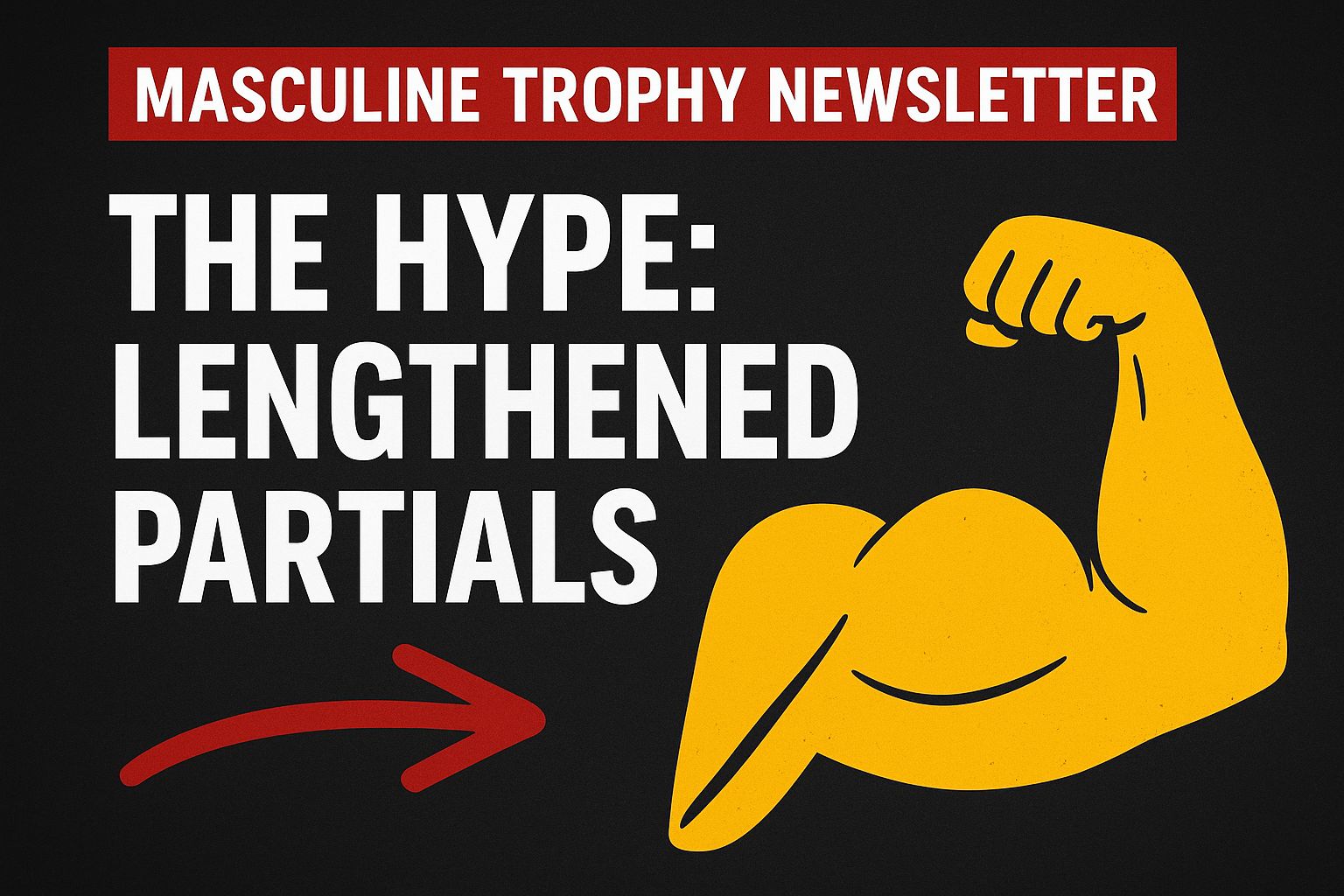The Hype: Lengthened Partials
Every few months, a new "muscle-building hack" takes over lifting forums.
Right now, it's "lengthened partials" and "stretch-focused training."
Guys are doing bottom-half curls, deficit Romanian deadlifts, and deep stretch flies — convinced they've found the secret to more growth.
But what does the research actually say about muscle length and hypertrophy?
Spoiler: It's not what most lifters want to hear.
Science vs. Stretch Training
Recent Meta-Analysis: Systematic review examining muscle length and regional hypertrophy across multiple studies.
The Setup: Researchers compared training at longer muscle lengths versus shorter lengths across different exercises and muscle groups.
The Results: Training at longer muscle lengths produced no significant differences in overall muscle hypertrophy compared to shorter lengths.
Key Finding: Even regional hypertrophy analysis (looking at different parts of the muscle) showed only "trivial to small effects" that weren't practically meaningful.
Translation: Your muscle doesn't really care if you're training it stretched or shortened — growth is basically the same either way.
The Kicker: Full range of motion consistently matched or beat partial range training, regardless of which part of the ROM was emphasized.
What Actually Matters for Growth
Here's the thing that bugs me about this whole "lengthened partials" craze:
The research is crystal clear. Multiple studies show that muscle length during training doesn't significantly impact hypertrophy. Yet experienced lifters keep chasing these techniques.
So I asked myself: Why the disconnect?
My theory: It's pure placebo effect.
Think about it. When you try a new "advanced" technique, you:
Pay more attention to that muscle group
Focus harder during those sets
Expect better results
Look for signs that it's "working"
The Psychology of "Special" Techniques:
Lifters want to believe they've discovered something others haven't. Bottom-half curls feel different than regular curls — more intense, more targeted. That sensation tricks your brain into thinking it must be more effective.
But here's what's actually happening:
The "better pump" you feel? That's just different muscle activation patterns, not superior growth stimulus.
The "deeper stretch sensation"? Your nervous system responding to an unfamiliar range, not enhanced hypertrophy.
The "muscle feels more worked"? Novel stimulus creating temporary adaptation, not long-term advantage.
I've seen this pattern repeat for 15 years:
1. New technique emerges claiming to be superior
2. Early adopters swear by the results
3. Research eventually shows it's no better than basics
4. Technique fades, new one takes its place
The Real Problem:
While lifters obsess over muscle length optimization, they ignore variables that actually matter:
Progressive overload consistency
Total training volume
Recovery between sessions
Exercise selection for their body type
My Blunt Take: If you're not consistently adding weight or reps to your basic movements, you have no business chasing "advanced" techniques.
What Actually Works:
Full range of motion on compound movements. Progressive overload. Consistent execution over months and years.
It's not sexy. It doesn't feel "cutting edge." But it's what builds muscle.
The Bottom Line: The muscle length research confirms what
we should already know — there are no shortcuts. The fundamentals work because they've always worked.

